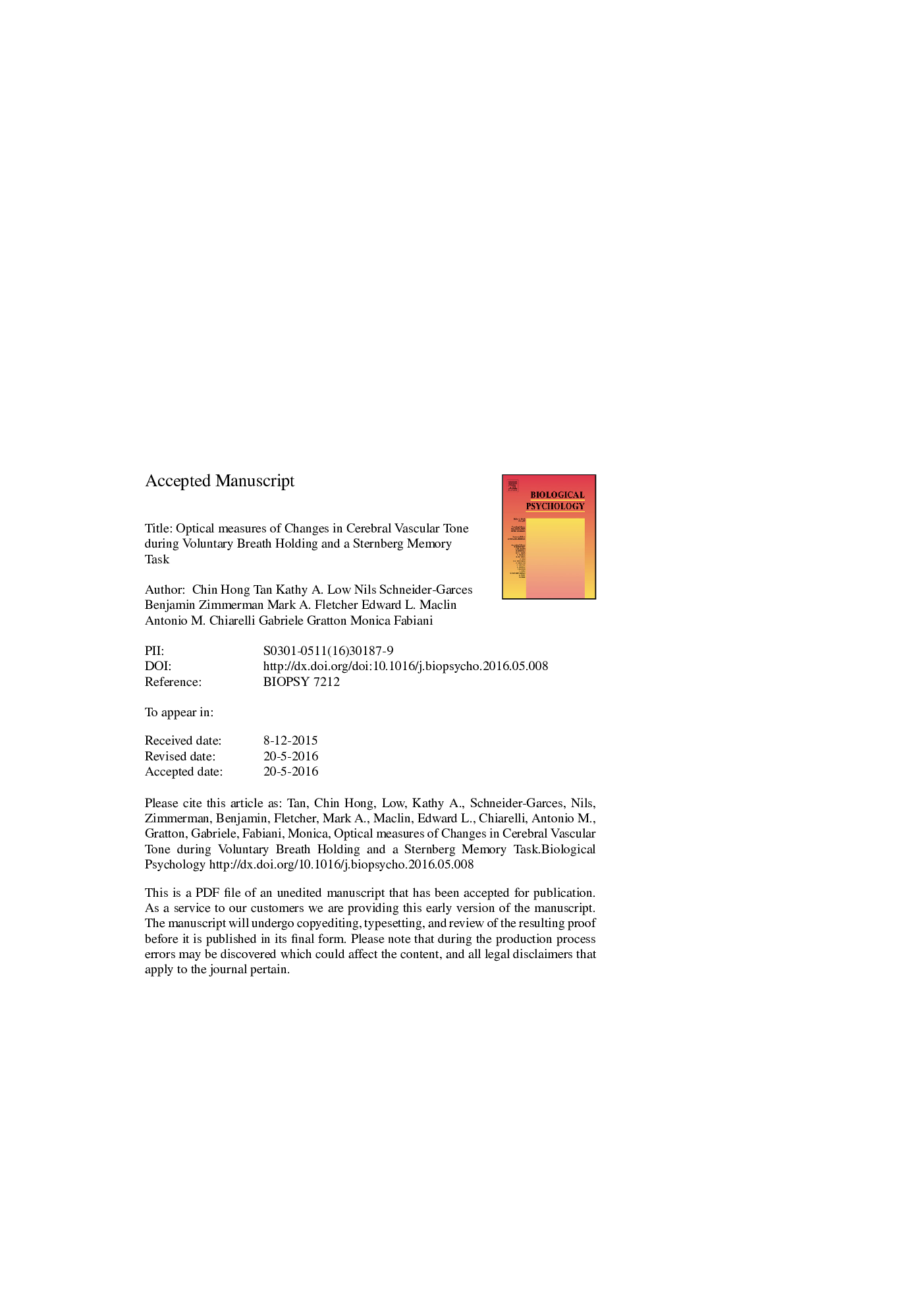| Article ID | Journal | Published Year | Pages | File Type |
|---|---|---|---|---|
| 7278444 | Biological Psychology | 2016 | 37 Pages |
Abstract
The human cerebral vasculature responds to changes in blood pressure and demands for oxygenation via cerebral autoregulation. Changes in cerebrovascular tone (vasoconstriction and vasodilation) also mediate the changes in blood flow measured by the BOLD fMRI signal. This cerebrovascular reactivity is known to vary with age. In two experiments, we demonstrate that cerebral pulse parameters measured using optical imaging can quantify changes in cerebral vascular tone, both globally and locally. In experiment 1, 51 older adults (age range = 55-87) performed a voluntary breath-holding task while cerebral pulse amplitude measures were taken. We found significant pulse amplitude variations across breath-holding periods, indicating vasodilation during, and vasoconstriction after breath holding. The breath-holding index (BHI), a measure of cerebrovascular reactivity (CVR) was derived and found to correlate with age. BHI was also correlated with performance in the Modified Mini-Mental Status Examination, even after controlling for age and education. In experiment 2, the same participants performed a Sternberg task, and changes in regional pulse amplitude between high (set-size 6) and low (set-size 2) task loads were compared. Only task-related areas in the fronto-parietal network (FPN) showed significant reduction in pulse amplitude, indicating vasodilation. Non-task-related areas such as the somatosensory and auditory cortices did not show such reductions. Taken together, these experiments suggest that optical pulse parameters can index changes in brain vascular tone both globally and locally, using both physiological and cognitive load manipulations.
Related Topics
Life Sciences
Neuroscience
Behavioral Neuroscience
Authors
Chin Hong Tan, Kathy A. Low, Nils Schneider-Garces, Benjamin Zimmerman, Mark A. Fletcher, Edward L. Maclin, Antonio M. Chiarelli, Gabriele Gratton, Monica Fabiani,
